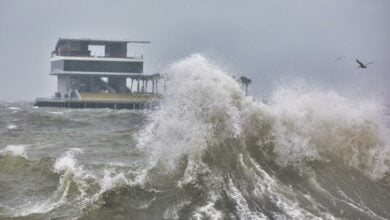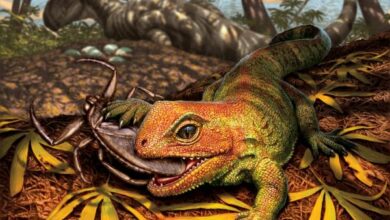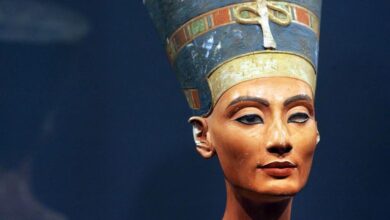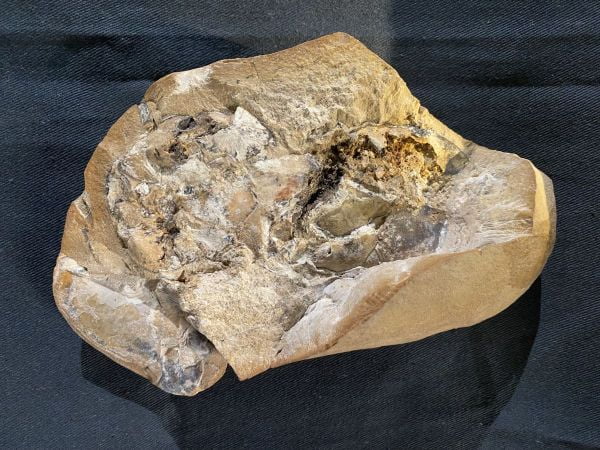
Australians have discovered the oldest hearts 390-370 million years old. These are the hearts of armored fish
(ORDO NEWS) — At the 390-370 million year old Gougou site in Australia, paleontologists have discovered fossils of ancient placoderm fish with well-preserved internal organs, including the oldest known hearts.
As noted in an article for the journal Science, the find allows not only to reconstruct the structure of placoderms, but also to better understand the evolution of jawed teeth, including determining the moment when lungs appeared.
Unlike bones, soft tissues are poorly preserved in the fossil record. This seriously complicates the work of specialists studying the anatomy and physiology of extinct animals.
However, sometimes the remains of ancient creatures with perfectly preserved integuments, muscles and even internal organs still fall into the hands of scientists. Typically, such fossils form in an anoxic environment with a minimal amount of bacteria, where they have time to fossilize before they decompose.
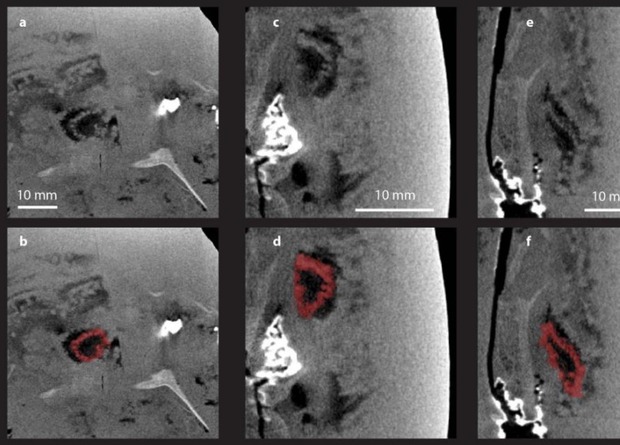
Localities with exceptional preservation of organisms, where fossils with soft tissues can be found, are called conservation-type lagerstätts. These include, for example, the Burgess Shale in British Columbia or the Solnhofen Shale in Germany.
The lesser known Lagerstätt Gogo is located in Australia. This 390-370 million year old Upper Devonian site yielded numerous remains of ancient placoderm fish (Placodermi) (or, as they used to be called, armored fish) with well-preserved skeletons and muscles.
Once they inhabited a tropical sponge-algae reef, and after their death, they were petrified in deep waters with low oxygen content.
A team of paleontologists led by Kate Trinajstic of Curtin University have described several more unusual fossils from the Gougou site.
The researchers found here several fossils of placoderms Compagopiscis croucheri and Incisoscutum ritchiei from the order Arthrodira (Arthrodira) with internal organs that retained a three-dimensional structure. Separate specimens have preserved the heart (their hearts are the oldest in the fossil record), liver, stomach and intestines.
This is one of the first finds of its kind. Previously, the internal organs of placoderms and other early jawed animals were known only from the remains of the digestive tract and blood vessels, which belonged to bothriolepis (Bothriolepis) from the order of antiarchs (Antiarchiformes).
By studying the Gougou arthrodire using phase-contrast synchrotron X-ray microtomography and neutron tomography, Trinaistik and her colleagues were able to reconstruct their internal structure. True, not a single specimen found contained a complete set of organs, so the authors had to combine data on several specimens together.
The researchers found that arthrodires had an S-shaped heart with an atrium, a ventricle, and an arterial cone. The authors could not distinguish traces of the venous sinus in fossils, but they found a ventral aorta extending from the heart.
In the anterior part of the abdominal cavity, the researchers saw two diamond-shaped structures, in which they identified a large bilobed liver, which served to increase buoyancy, like in modern sharks.
In addition, ancient fish from Gougou preserved traces of a stomach and intestines with a spiral valve. In the rectum, even semi-digested remains of the crustacean Montecaris gogoensis were found.

No traces of lungs have been found in the arthrodires of Gougou. This is an important argument in discussions about the origins of these organs. According to one hypothesis, lungs appeared in a common ancestor of bony fishes (Osteichthyes).
Proponents of another version argue that they arose much earlier - in the first jawed. The absence of lungs in the fish studied by Trinaistik and her colleagues supports the first version. It is probable that lungs arose later, in early bony fishes.
Data on the structure of arthrodires also made it possible to clarify their systematic position. The heart of these fish was shifted to the side of the head, like in cartilaginous and bony fish, but not like in antiarchs.
Thus, the phylogenetic reconstructions, in which Arthrodires are closer to late gnats than Antiarchs, are correct.
Earlier, we talked about how paleontologists analyzed the structure of the jaw bones of basal placoderms - acanthothoracid.
It turned out that in them, like in a number of bony fish, the teeth were located along the edges of the jaws, attached both to the integument of the body and to the jaw bones, and new ones grew from the side of the tongue (inner), and not from the “cheeks” (outer).
—
Online:
Contact us: [email protected]
Our Standards, Terms of Use: Standard Terms And Conditions.



